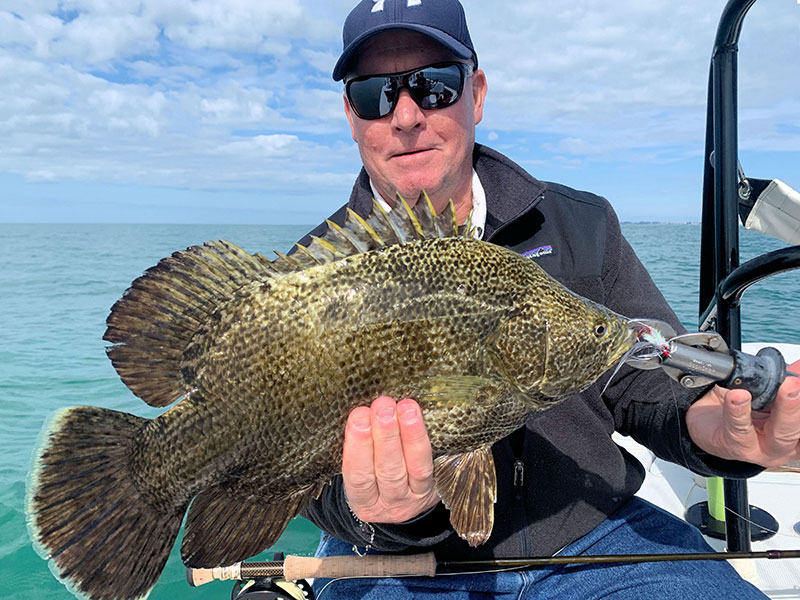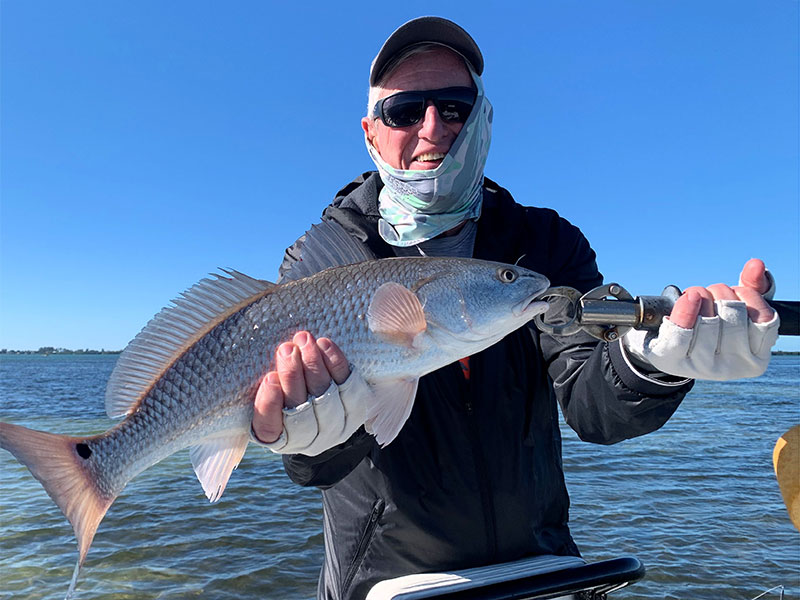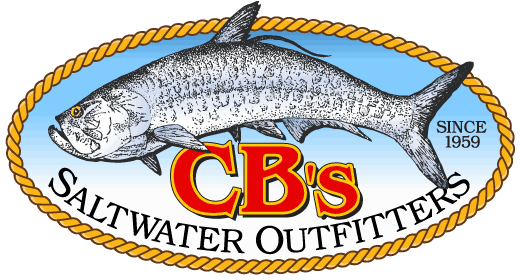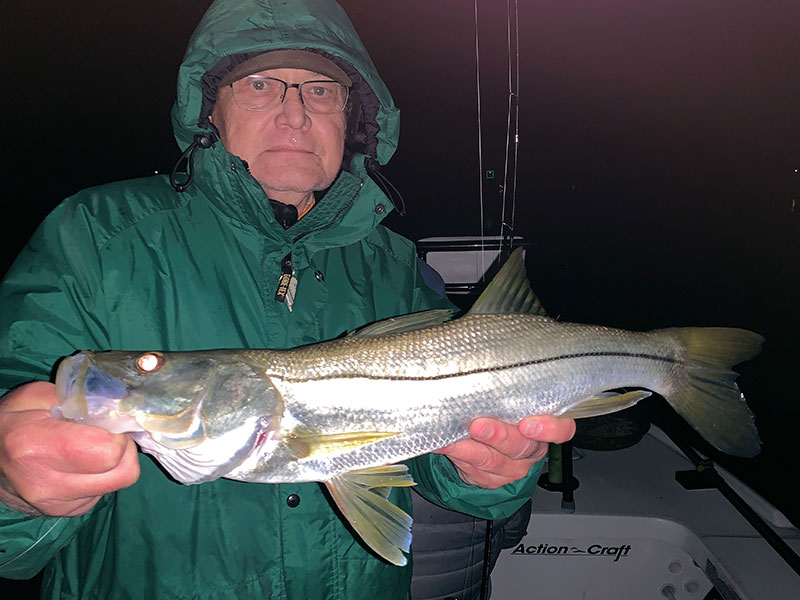You may find reds and big trout concentrated in potholes in January. Action with trout, blues, Spanish mackerel, pompano and more on deep grass flats can be good depending on conditions.
There should also be good catch and release snook action in rivers, creeks and canals this month, although fishing docks for snook and other species is also a good option. It may be worth checking the coastal gulf for tripletail, cobia, false albacore (little tunny) and more when it’s warm.
Snook season is closed during January, although catch and release fishing is allowed. Use tackle heavy enough to catch and release snook quickly with as little handling as possible. They are temperature sensitive, so I won’t target them if the water temperature dips below 60 degrees.
However, fishing lighted docks in the ICW at night with lures and flies can be very good in January. Small white flies, like my Grassett Snook Minnow, Gurglers and shrimp fly patterns will work well for fly anglers. Spin anglers should score with CAL jigs with shad tails or 4″ jerk worms, DOA Tiny TerrorEyz and DOA 2-3/4” & 3″ Shrimp. Fish peak tidal flows for the best action. Full regulations and details for all species can be viewed at www.myfwc.com.
You should also find snook in rivers, creeks and canals this month. Fish deeper water in outside bends to locate snook where you may catch them with CAL jigs and shad tails or jerk worms, DOA Baitbusters or diving/suspending plugs. You may also find reds, juvenile tarpon and even largemouth bass in the same areas depending on salinity.
Reds should be a good option this month. You’ll find them concentrated in potholes when the tide is low. Fly anglers should score with lightly weighted flies fished on a 10′-12′ leader with a floating fly line. Reds feed on crustaceans this time of the year, so crab and shrimp fly patterns should work well. They may tail on shallow grass flats when the tide is low. You’ll need weedless rigged plastic baits or flies with weed guards to target tailing reds. A CAL shad tail on a weedless hook or a DOA shrimp rigged weedless and fished backwards are a couple of my favorite lures for tailing reds.
You may also find reds around docks, along with snook, sheepshead, flounder and more. Little Sarasota Bay has numerous oyster bars and docks that often hold reds in January. Work CAL jigs slowly along the bottom for the best action. You’re likely to find big trout in many of the same areas that you find reds. In my opinion it’s important to protect larger trout, which are usually female breeders. The same lures, flies and techniques that are used for reds will also work for big trout.
You’ll also find trout on deep grass flats in January along with blues, Spanish mackerel, pompano, flounder and more. I like to drift and cast ahead of my drift with CAL jigs and a variety of plastic tails and DOA Deadly Combos. Since trout can sometimes hold very tight to a particular spot or area, try to cover as much water as possible to find them. Once you’ve located fish you can shorten your drift or anchor on them.
A GPS can be useful for this type of fishing since the breadcrumb trail will allow you to duplicate your drift. A drift anchor will slow your drift so you can fish it more thoroughly or make it easier for fly anglers to move their fly. My favorite deep grass flats, have a good mix of grass and sand with a strong tidal flow.
Even though there may not be much happening in the coastal gulf this month in the way of sight fishing it may be worth a look when it is warm. Migratory species such as king and Spanish mackerel, cobia and tripletail probably have moved further south, however they could reappear during warm ups. Also look for false albacore (little tunny) when it’s warm since they may move from offshore to inshore depending on where baitfish are located.
January can be one of the toughest months of the year to fish. However if you are able to choose when to fish based on tides and weather, it can be good. Action is usually good as weather fronts approach. Following fronts, fishing may be tough for a couple of days so afternoons may fish better at that time. I’ll let the stage of the tide determine where to look for fish. When the tide is low, look for reds tailing on shallow grass or reds, trout and more in potholes or around docks. Look for reds or big trout cruising on shallow grass flats on sunny afternoons when the tide is high.
Our natural resources are under constant pressure from red tides fueled by industrial, agricultural and residential runoff, freezes, increasing fishing pressure and habitat loss and degradation, please limit your kill, don’t kill your limit!
You may find reds and big trout concentrated in potholes on low tides in January. Action with trout, blues, Spanish mackerel, pompano and more on deep grass flats can be good depending on conditions. There should also be good catch and release snook action in rivers, creeks and canals this month, although fishing docks for snook and other species is also a good option. It may be worth checking the coastal gulf for tripletail, false albacore (little tunny) and more if it’s warm.
Snook season is closed during January, although catch and release fishing is allowed. Use tackle heavy enough to catch and release snook quickly with as little handling as possible. Since snook are temperature sensitive, I won’t target them if the water temperature dips below 60 degrees. However, fishing lighted docks in the ICW at night with flies can be very good in January. I often also find big bluefish mixed with snook, particularly around bridges in January.
Small white flies, like my Grassett Snook Minnow, Gurglers and shrimp fly patterns fished on intermediate sink tip fly lines should work well Fish peak tidal flows for the best action. Full regulations and details for all species can be viewed at www.myfwc.com.

Kirk Grassett with a nice tripetail caught and released on a fly while fishing in Sarasota with Capt. Rick Grassett.
You should also find snook in rivers, creeks and canals this month. Fish deeper water in outside bends to locate snook where you may catch them with wide profile flies fished on sink tip fly lines. You may also find reds, tarpon and even largemouth bass in the same areas depending on salinity.
Reds should be a good option this month. You’ll find them concentrated in potholes when the tide is low. Fly anglers should score with lightly weighted flies fished on a 10’-12’ leader with a floating fly line. Reds feed on crustaceans this time of the year, so crab and shrimp fly patterns should work well. They may tail on shallow grass flats of Gasparilla Sound, and lower Tampa Bay when the tide is low. You’ll need flies with weed guards when targeting tailing reds since they are usually in thick turtle grass.
You may also find reds around docks, along with snook, sheepshead, flounder and more. Little Sarasota Bay has numerous oyster bars and docks that often hold reds, snook and sheepshead in January. Use floating fly lines and lightly weighted flies to fish around oyster bars and sink tip fly lines to fish docks. You’re likely to find big trout in many of the same areas that you find reds. In my opinion it’s important to protect larger trout, which are usually female breeders. The same flies and techniques that are used for reds will also work for big trout.

There should be good action in skinny water in January. Marshall Dinerman, from Lido Key, with a red caught and released on CAL jigs with shad tails while fishing Sarasota Bay with Capt. Rick Grassett in a previous January.
Even though there may not be much happening in the coastal gulf this month in the way of sight fishing it may be worth a look when it is warm. Migratory species such as king and Spanish mackerel, cobia and tripletail probably have moved further south, however they could reappear during warm ups. Also look for false albacore (little tunny) when it’s warm since they may move from offshore to inshore depending on where baitfish are located.
January can be one of the toughest months of the year to fish. However if you are able to choose when to fish based on tides and weather, it can be good. Action is usually good as weather fronts approach. Following fronts, fishing may be tough for a couple of days so afternoons may fish better then. I’ll let the stage of the tide determine where to look for fish. When the tide is low, look for reds tailing on shallow grass or reds, trout and more in potholes or around docks. Look for reds or big trout cruising on shallow grass flats on sunny afternoons when the tide is high.
Our natural resources are under constant pressure from red tides fueled by agricultural, industrial and residential runoff, toxic spills and discharges, freezes, increasing fishing pressure and habitat loss and degradation, please limit your kill, don’t kill your limit!




